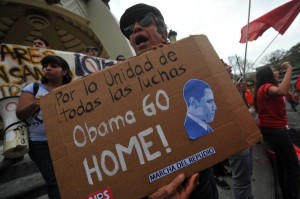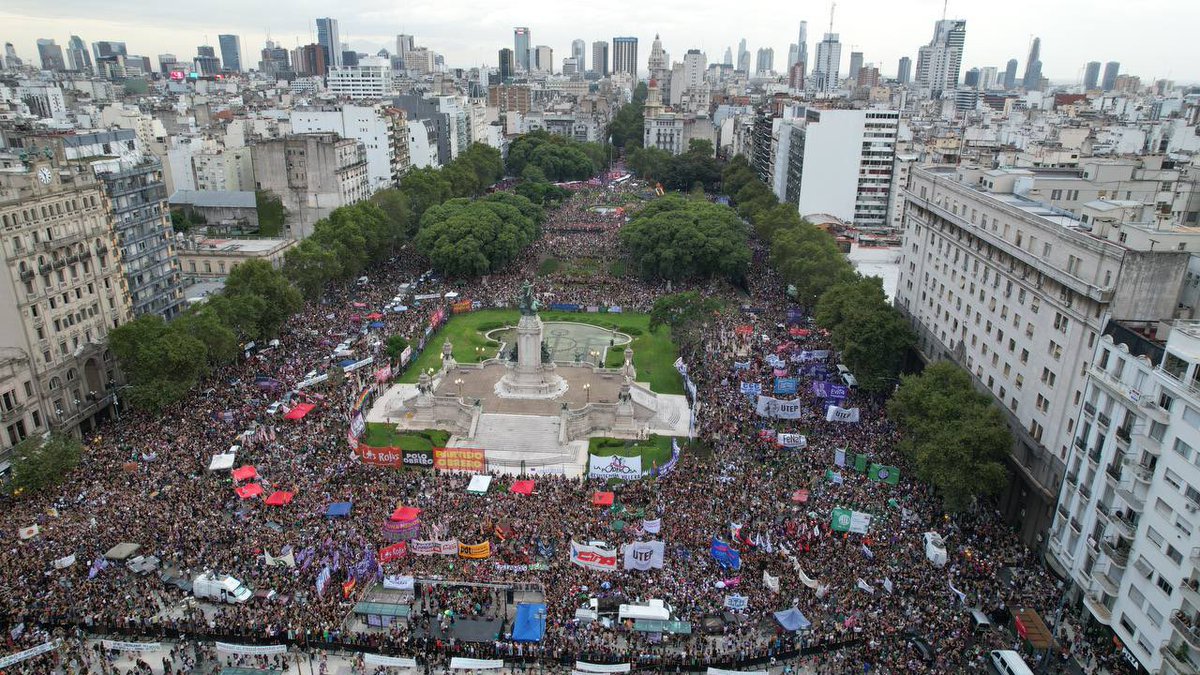 Days before President Barack Obama arrived on Costa Rican soil, three Black Hawk helicopters would appear on the horizon of the army-less Central American country, scanning the streets for potential security threats. When the president landed in the country on Friday, May 3, the streets of the capital city San José were empty and silent, cleared by local police in preparation for the leader’s visit. It was the president’s second stopover on a diplomatic trip into the region that was referred to by Secretary of State John Kerry as “America’s backyard” just weeks before.
Days before President Barack Obama arrived on Costa Rican soil, three Black Hawk helicopters would appear on the horizon of the army-less Central American country, scanning the streets for potential security threats. When the president landed in the country on Friday, May 3, the streets of the capital city San José were empty and silent, cleared by local police in preparation for the leader’s visit. It was the president’s second stopover on a diplomatic trip into the region that was referred to by Secretary of State John Kerry as “America’s backyard” just weeks before.
Obama’s visit into the region focused on issues of great domestic concern to the United States, including regional security, migration, and commerce. Organized drug violence appeared to, at least in the public appearances, take the back seat. As Carlos Molina Minero, president of the Central American Institute for Social Studies (ICAES) in Costa Rica put it, “this was Obama’s trip to say ‘look, Latin America, I’m still here!”
After a stopover in Mexico, Obama’s first since the election of Enrique Peña Nieto, the U.S. president arrived in Costa Rica to address the Central American Integration System, known in Spanish by its initials SICA. The main topic on the executive agenda, as the name of the hosting organization would imply, was regional integration. In broad terms, the president, Central American, and Caribbean leaders discussed cooperation throughout the isthmus on economic, security, and migration issues.
Economically, as the thinking goes, a region composed of six small countries with correspondingly small economies could, if integrated, carry more negotiating weight as a trade block whose combined economic worth is closer to that of Peru or Chile. While recent free trade agreements (FTAs) have further stimulated regional integration, regional integration is a project that was first taken up in the 1960s with the creation of the Central American Common Market.
“The benefits of regional integration are numerous,” said Carlos Manuel Echeverría, director of communications and public relations at SICA. “It provides economic diversification, development of the middle class, an increase in job creation, more investment, and more competition.”
Trade in Central America has grown since regional integration began in the 1960s, most notably with the United States. Central America’s behemoth northern neighbor is the largest trading partner of the region, accounting for 33 percent of the region’s exports in 2012, a quantity that totaled 9.8 billion dollars. Similarly, 41 percent of the region’s imports come from the United States. The predominance of the U.S. as provider and market was cemented in by the controversial signing of the Central American Free Trade Agreement (CAFTA) between the region’s countries and the United States.
“The U.S. recognizes our fates are tied up with your success,” Obama said to a crowd of businessmen in San José on Friday. “If you are doing well, we will do better. And if we’re doing well, we think your situation improves.”
But growing trade with the United States doesn’t tell the entire story. Although average living standards across the region have risen, the income gap between the region’s highest and lowest social strata has failed to shrink. The idea that smaller countries can substitute for size with economic openness has not proven, particularly in Central America, to have positive effects distributed throughout the region.
“In Costa Rica, the GINI index shows how inequality continues to grow every day,” said Juan Carlos Mendoza García, deputy for the Citizen Action Party (PAC) in Costa Rica. “We would like to see trade that can promote equality, wealth distribution, and conservation of our natural resources.”
Throughout the region, average income per capita has declined to 16 percent of what it currently is in the US, down from 19 percent in the 1960s. This comes despite considerable opening of the region’s economies and the signing of a number of free trade agreements that promised to bring new jobs, prosperity, and growth to the region. In an announcement send from Costa Rica, Obama reaffirmed his commitment to economic cooperation throughout the Americas, pointing to the domestic benefit of free trade. “Millions of Americans earn a living right now because of the trade between our nations,” he said. “And after this week, I’m as confident as ever that we can build on our shared heritage and values to open more markets for American businesses and create more jobs for American workers.”
Yet across the capital city San José, others are not as enthusiastic. “FTAs are not magic wands,” said Molina. “What we have seen in the negotiation process is a great deal of corporate participation and diminished returns for workers. If we are going to continue looking at trade as a means of development, we need to be demanding decent jobs and sustainable development.”
While criticisms of the US-promoted neoliberal trade model abound, particularly in Costa Rica, where CAFTA-DR passed by only a few percentage points in a national referendum, liberalization proponents point to other factors that have limited economic growth and prosperity.
“Due to the failed war on drugs, crime rates throughout the region have shot up to some of the highest rates on the planet,” said Juan Carlos Hidalgo, Latin American policy specialist at the CATO Institute in Washington D.C. “It is difficult to see substantial economic growth with the current levels of violence present throughout Central American countries.”
Aside from the effect of violence, which cannot be ignored by either Washington or Central America, another primary challenge to regional growth and a truly realized regional integration is the existing asymmetry between countries in the region. It is one of the reasons why SICA, in its 22 years of existence, is still struggling to reach its stated goals of promoting deeper regional peace, democracy, and levels of development.
The disparity of per capita income between countries is one such example of remaining economic asymmetry. According to the Institute for International Economics, the region’s richest country, Costa Rica, has a per capita income of $3,940 while the region’s poorest country, Nicaragua, is at a mere $473.
“The question at hand is not about what has been agreed to in the trade agreements but what has been implemented in these countries,” says Molina. “FTAs cannot substitute for a country’s policies, and those continue to be greatly varied throughout Central America.”
While regional integration continues to be an important goal for Central American countries, analysis at ICAES describe the relationship between countries as cooperative, indicating that true regional integration has not yet been realized. And until greater regional integration and stability is achieved, it is going to be difficult for sustained growth and prosperity to take hold in the region. And while Central America continues to reevaluate its regional goals strengthen integration efforts between countries, the efforts will inevitably on the character of its evolving relationship with the United States.
“The US simply has to change the way that they see us from the north,” added Molina, explaining that better trade policy would have a positive effect on both migration and security. “The only way that migration to the US is going to stop – or slow – is for the US to start promoting projects that lead to sustainable development.”
“We don’t want to be America’s backyard any longer,” he added. “Instead of interference in our politics, we’d like to see more technology, infrastructure, and education.”
Eva Hershaw is an independent journalist and photographer based out of Mexico City.



